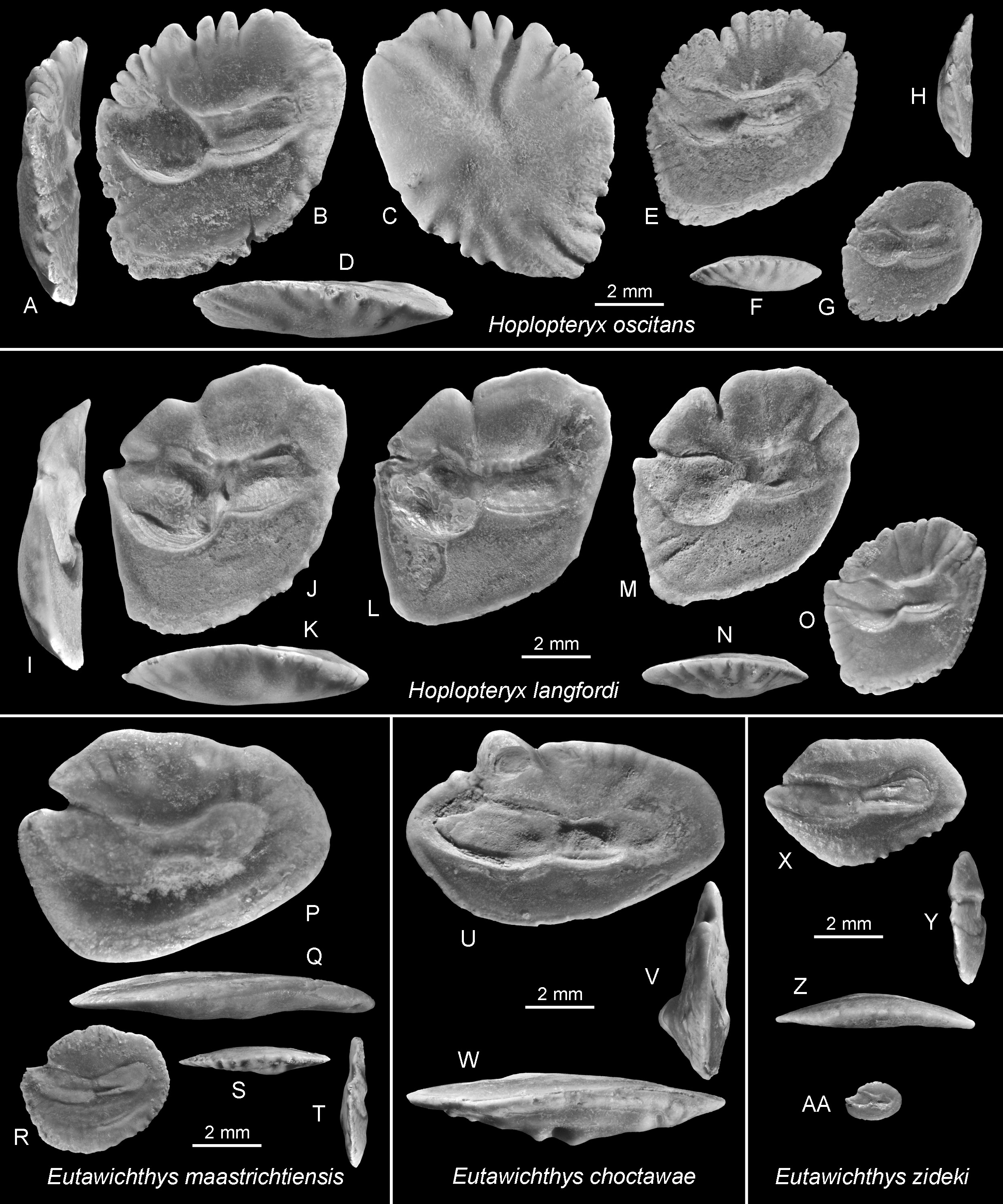HIGHLY DIVERSIFIED LATE CRETACEOUS FISH ASSEMBLAGE REVEALED BY OTOLITHS (RIPLEY FORMATION AND OWL CREEK FORMATION, NORTHEAST MISSISSIPPI, USA)
DOI:
https://doi.org/10.13130/2039-4942/13013Keywords:
Beryciformes; Holocentriformes; Aulopiformes; otolith; evolutionary implications; paleoecology.Abstract
Bulk sampling and extensive, systematic surface collecting of the Coon Creek Member of the Ripley Formation (early Maastrichtian) at the Blue Springs locality and primarily bulk sampling of the Owl Creek Formation (late Maastrichtian) at the Owl Creek type locality, both in northeast Mississippi, USA, have produced the largest and most highly diversified actinopterygian otolith (ear stone) assemblage described from the Mesozoic of North America. The 3,802 otoliths represent 30 taxa of bony fishes representing at least 22 families. In addition, there were two different morphological types of lapilli, which were not identifiable to species level. The large number of otolith specimens as well as the preservation contributed to the recognition of 4 new genera and 13 new species. The otoliths supplied information regarding the presence of bony fishes not available solely on the basis of osteological remains, and the Late Cretaceous bony fish assemblage at the sites would be underestimated and misinterpreted without an examination of the otoliths. The otoliths also contributed evidence on the evolutionary development of teleosts in North America, especially the diversity of the beryciforms in the Late Cretaceous, and provided indications of the paleoecology during the Maastrichtian. The Ripley Formation (Coon Creek Member) otolith assemblage, which accounted for 3,718 of the specimens, is compared to other Cretaceous otolith assemblages in North America that meet certain criteria (employed bulk-sampling techniques, had well-preserved specimens, and possessed a substantial number of specimens and taxa for analysis). These sites were in Alabama, Maryland, Mississippi (two localities), New Jersey, North Carolina, North Dakota, Tennessee, and Texas. Systematic surface collecting at the Blue Springs locality proved to be very beneficial in supplying otoliths specimens from maturer fishes. Many of the surface-collected otoliths represent older adult fishes that assist with the identification of several forms with greater specificity.
Metrics

Downloads
Published
Issue
Section
License
The journal allow the author(s) to hold the copyright without restrictions.






